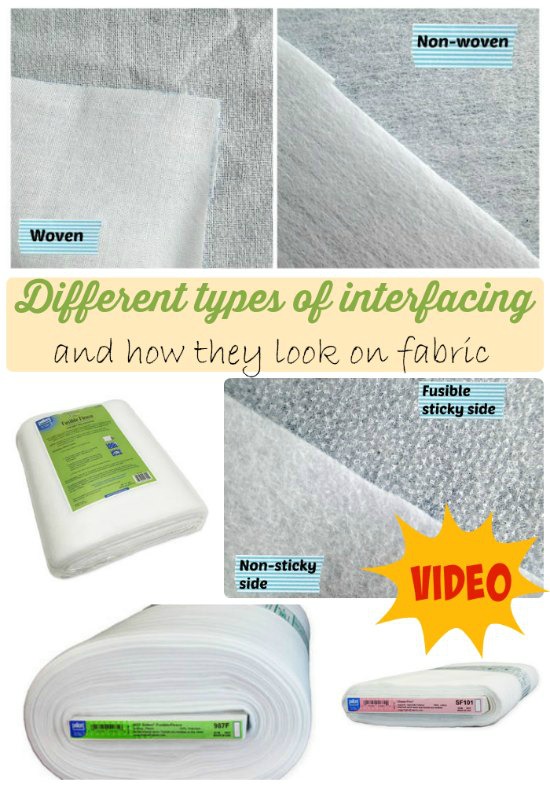A look at different types of interfacing – free video

[ssba-buttons]
When you pick a sewing pattern to start for your next project, you’ll pick your fabrics and hardware first because those give the bag it’s unique style and finish. But what’s underneath the exterior of the bag, the bones of the bag, are what’s going to make the bag hardwearing, functional, and make sure the bag keeps those good looks and shape for as long as possible.
Most patterns will usually suggest recommended interfacing and stabilisers based on the designers own testing and examples, and those of the pattern testers. Sometimes, however, you may not be able to get a particular recommended product in your area, or you may decide to change up one or more of the interfacing products to make the bag softer, firmer, more or less flexible etc.
Perhaps you are using a type of fabric other than the one used in the example bags. Many bags are sewn with quilting cottons, and an increasing number of patterns these days call for a heavier cotton or fabric, such as a canvas or a home decor weight. In order to get the same result on both fabrics, you would need to apply a different weight of interfacing.
Having experience of a range of interfacing, foam and stabilisers makes you a better sewer when it comes to bag making. You can make your own informed choices about which interfacing is going to work best with your chosen fabrics and materials, even if that differs from the designer’s recommendation.
Here’s a handy video showing several different types of interfacing. It’s a few years old now and there are more products on the market now that weren’t covered in the video, but this is still a great place for beginners to bag sewing to start to learn about all the options and how they vary.
Beginners guide to interfacing video
Examples used in the video:-
- Peltex – ultra-firm
- Decor Bond 809 – crispy and paper-like
- Shape Flex 101 – woven
- Fuse N Shape – double sided firm
- Deco Fuse 520 – thin but stiff, almost plastic-like, or by the bolt
- Fusible Fleece 987F
- Headliner foam – also similar but more expensive is Annie’s Soft and Stable
Deby used to make great sewing videos and patterns when she wrote for the So Sew Easy sewing blog, and even made a class on Craftsy/BluPrint for Sewing Wallets a few years back. She had to retire from sewing a few years ago following some bad health which was a loss to the online sewing community. We still keep our fingers crossed she’ll come back one day and share some more tutorials and easy to sew patterns with us.
Further learning about interfacing
Want to learn more about Interfacing and what goes on underneath your project? Check out this BluPrint class – Underneath it All: Guide to Interfacings, Linings and Facings
Or this one specifically about the interfacing used in bags – Building Better Bags: Interfacing and Structure
Liking this free pattern? Great! You would make our day if you ‘bought us a coffee’ to help with the site running costs. Thank you.





I’m not quite sure when this video was created, but Pellon has as awesome flexible foam interfacing called Pellon Flex Foam which comes with either a 1-sided, or 2-sided iron-on surface. You showcased headliner which is only dry cleanable. The Flex Foam is washable, with a type of tricot on both sides, making it a dream to work with. You can roll it up, or squish it, and it pops back into shape, making it a wonderful choice for purses or wallets. I love it!
Well, what do you know … You CAN teach an old dog new tricks ? !!
Thank you Debby, for taking the time to make this Very Informative video. I did not know most of the types of interface, especially ones for bag making (which I am just now ,after 50 yrs, getting into). Your experience has saved not only money and time, but sanity as well.
WELL DONE,dear, well done.
Blessings and spontaneous hugs ,
Marilyn ?
This is a really informative tutorial without all the unnecessary chat. It is a shame she
Has left the community, I hope she is now much better
Thankyou Deby